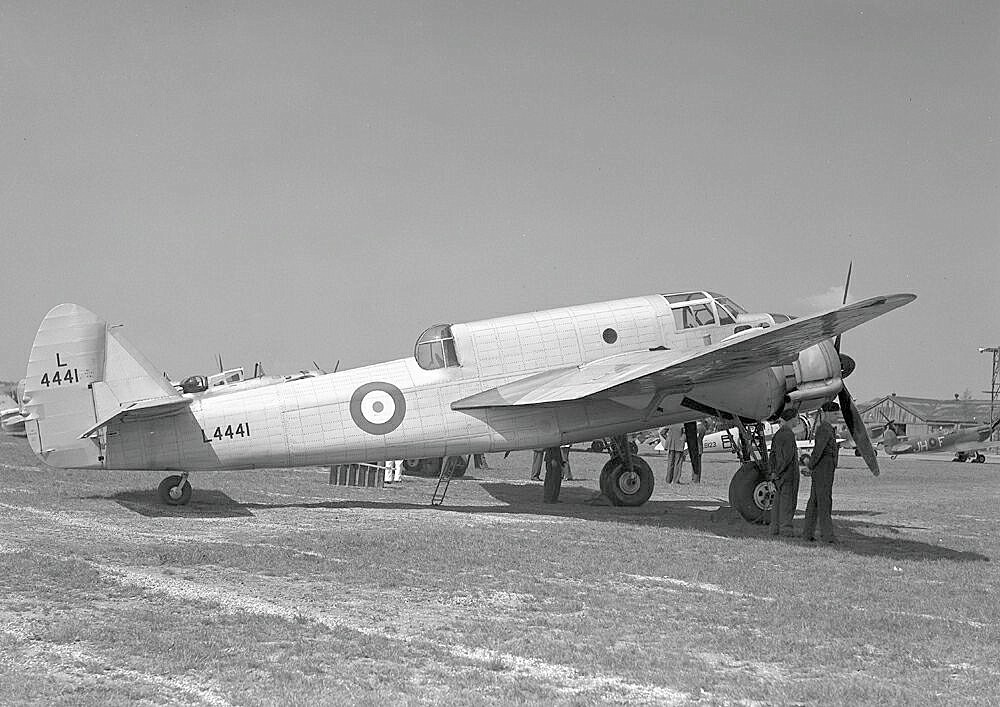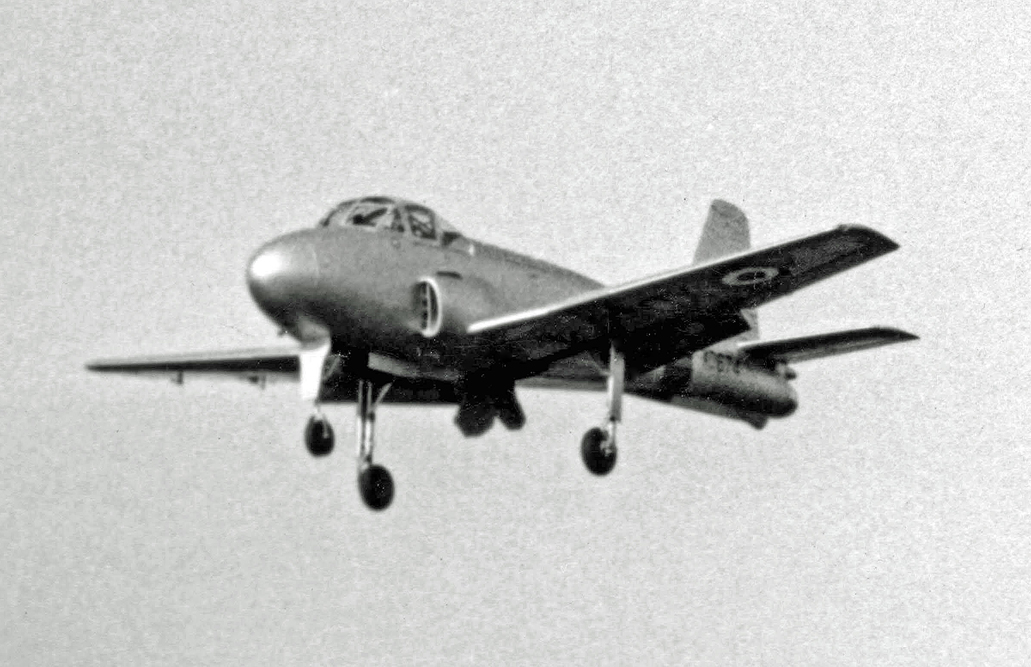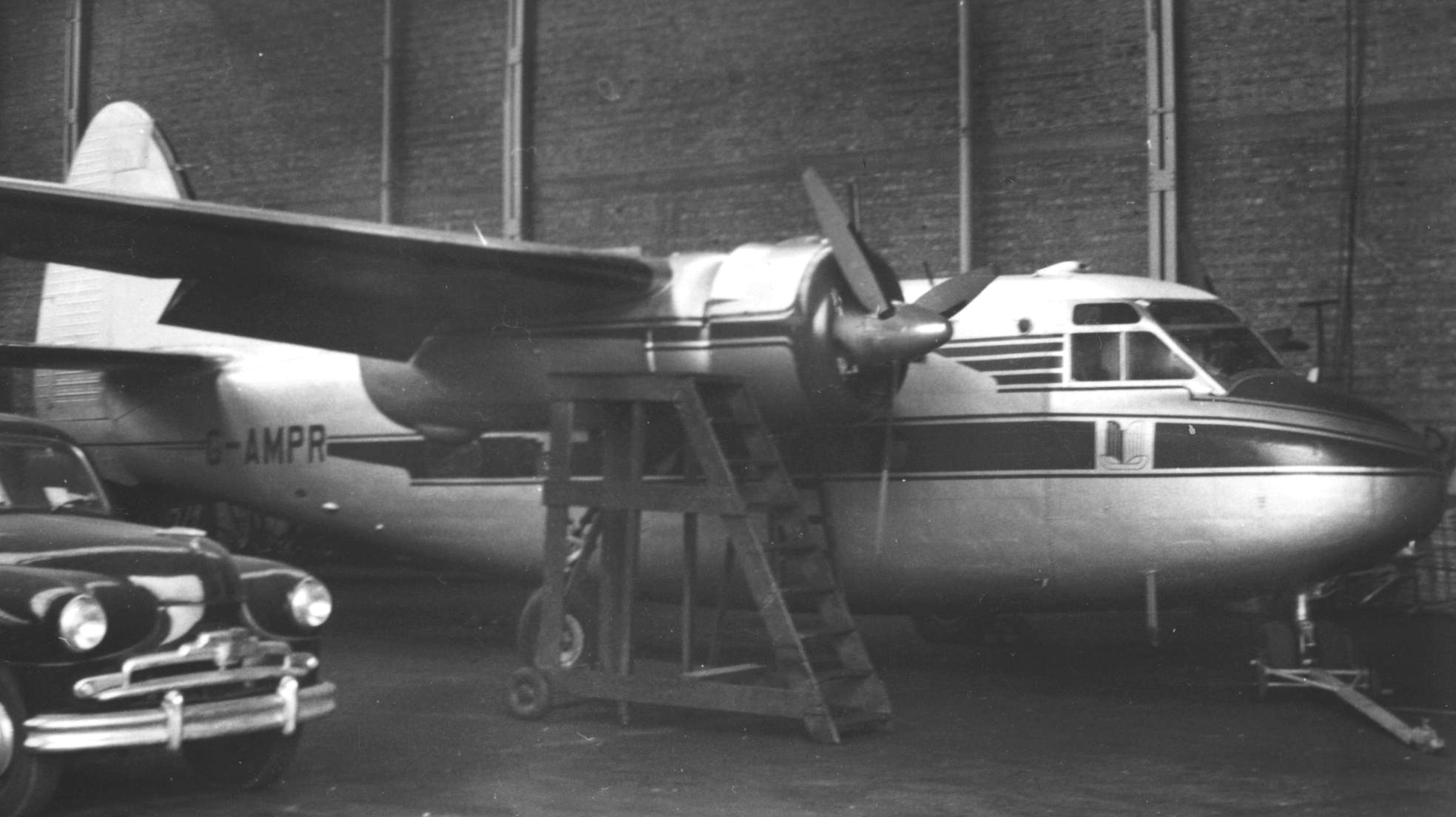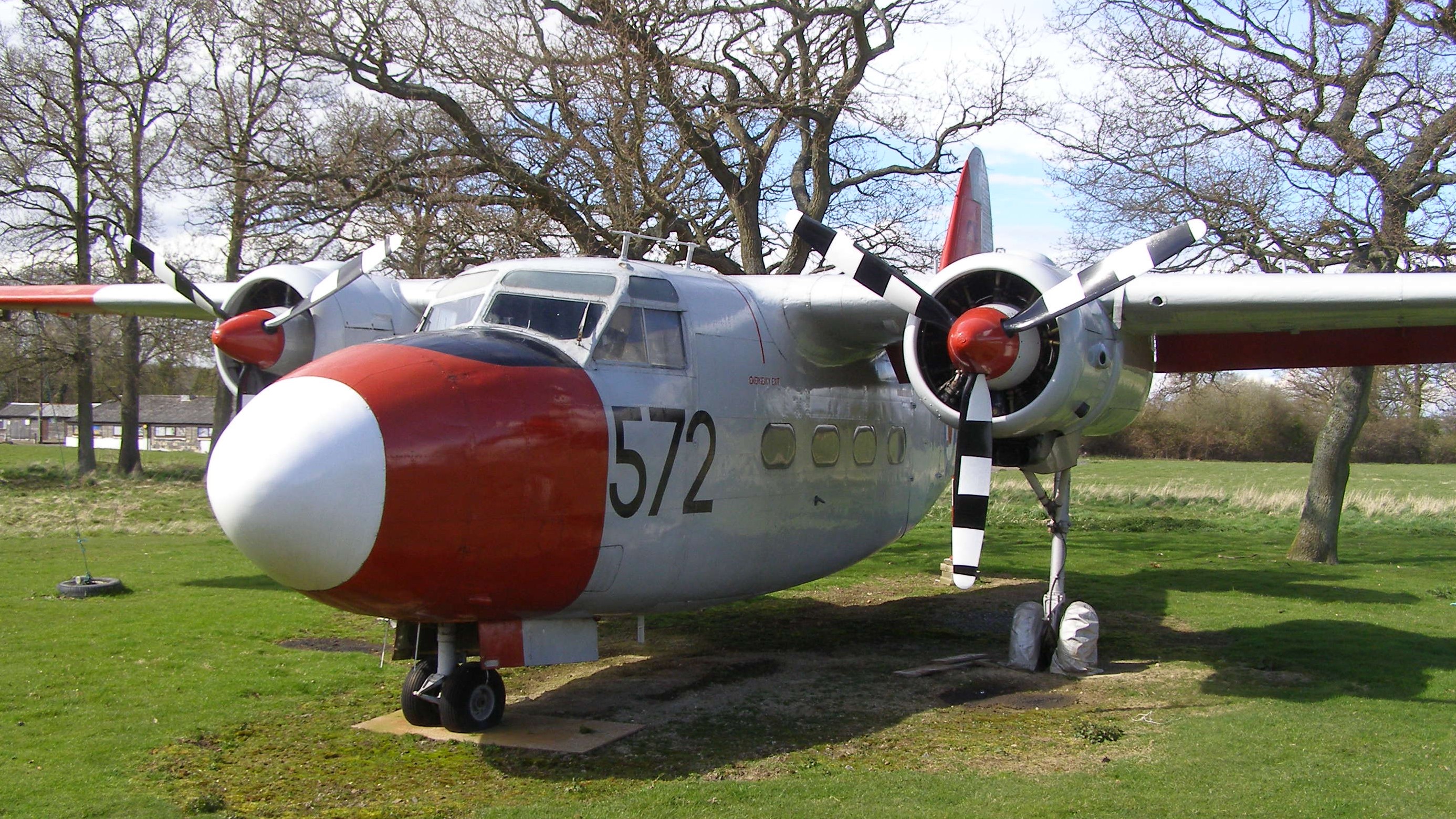|
Leslie Frise
Leslie George Frise FRAeS (2 July 1895 – 26 September 1979) was a British aerospace engineer and aircraft designer; he designed the Type 156 Bristol Beaufighter. He was involved in the development of aircraft and gun-turret hydraulic systems. Early life Frise was born in Bristol, Gloucestershire, an area which is now known as South Gloucestershire. He was educated at Bristol Grammar School and gained a BSc degree in Mechanical Engineering from the University of Bristol. Early in First World War he served in the Royal Naval Air Service (RNAS). Boulton Paul Aircraft In 1915 he started Boulton Paul Aircraft's first aircraft factory at Mousehold Heath, Norwich to make 100 Sopwith Camels. The company was previously a general manufacturing firm that had begun in 1873. Bristol Aeroplane Company In August 1915, Frank Barnwell rejoined Bristol Aeroplane Company and was looking for an assistant. He interviewed Leslie Frise and employed him in 1916; Frank Barnwell would become one of Br ... [...More Info...] [...Related Items...] OR: [Wikipedia] [Google] [Baidu] |
Bristol
Bristol () is a city, ceremonial county and unitary authority in England. Situated on the River Avon, it is bordered by the ceremonial counties of Gloucestershire to the north and Somerset to the south. Bristol is the most populous city in South West England. The wider Bristol Built-up Area is the eleventh most populous urban area in the United Kingdom. Iron Age hillforts and Roman villas were built near the confluence of the rivers Frome and Avon. Around the beginning of the 11th century, the settlement was known as (Old English: 'the place at the bridge'). Bristol received a royal charter in 1155 and was historically divided between Gloucestershire and Somerset until 1373 when it became a county corporate. From the 13th to the 18th century, Bristol was among the top three English cities, after London, in tax receipts. A major port, Bristol was a starting place for early voyages of exploration to the New World. On a ship out of Bristol in 1497, John Cabot, a Venetia ... [...More Info...] [...Related Items...] OR: [Wikipedia] [Google] [Baidu] |
Drag (physics)
In fluid dynamics, drag (sometimes called air resistance, a type of friction, or fluid resistance, another type of friction or fluid friction) is a force acting opposite to the relative motion of any object moving with respect to a surrounding fluid. This can exist between two fluid layers (or surfaces) or between a fluid and a solid surface. Unlike other resistive forces, such as dry friction, which are nearly independent of velocity, the drag force depends on velocity. Drag force is proportional to the velocity for low-speed flow and the squared velocity for high speed flow, where the distinction between low and high speed is measured by the Reynolds number. Even though the ultimate cause of drag is viscous friction, turbulent drag is independent of viscosity. Drag forces always tend to decrease fluid velocity relative to the solid object in the fluid's path. Examples Examples of drag include the component of the net aerodynamic or hydrodynamic force acting opposite to the di ... [...More Info...] [...Related Items...] OR: [Wikipedia] [Google] [Baidu] |
Bristol Brabazon
The Bristol Type 167 Brabazon was a large British piston-engined propeller-driven airliner designed by the Bristol Aeroplane Company to fly transatlantic routes between the UK and the United States. The type was named ''Brabazon'' after the Brabazon Committee and its chairman, Lord Brabazon of Tara, who had developed the specification to which the airliner was designed. While Bristol had studied the prospects of developing very large aircraft as bomber aircraft prior to and during the Second World War, it was the release of a report compiled by the Brabazon Committee which had led the company to adapting its larger bomber proposal into a prospective large civil airliner to meet the ''Type I'' specification for a very large airliner for the long-distance transatlantic route. Initially designated as the Type 167, the proposed aircraft was furnished with a huge 25 ft (8 m)-diameter fuselage containing full upper and lower decks on which passengers would be seated i ... [...More Info...] [...Related Items...] OR: [Wikipedia] [Google] [Baidu] |
Bristol Blenheim
The Bristol Blenheim is a British light bomber aircraft designed and built by the Bristol Aeroplane Company (Bristol) which was used extensively in the first two years of the Second World War, with examples still being used as trainers until the end of the war. Development began with the ''Type 142'', a civil airliner, in response to a challenge from Lord Rothermere to produce the fastest commercial aircraft in Europe. The ''Type 142'' first flew in April 1935, and the Air Ministry, impressed by its performance, ordered a modified design as the ''Type 142M'' for the Royal Air Force (RAF) as a bomber. Deliveries of the newly named Blenheim to RAF squadrons commenced on 10 March 1937. In service the Type 142M became the Blenheim Mk.I which would be developed into the longer Type 149, designated the Blenheim Mk.IV, except in Canada where Fairchild Canada built the Type 149 under licence as the Bolingbroke. The Type 160 Bisley was also developed from the Blenheim, but was already o ... [...More Info...] [...Related Items...] OR: [Wikipedia] [Google] [Baidu] |
Bristol Beaufort
The Bristol Beaufort (manufacturer designation Type 152) is a British twin-engined torpedo bomber designed by the Bristol Aeroplane Company, and developed from experience gained designing and building the earlier Blenheim light bomber. At least 1,180 Beauforts were built by Bristol and other British manufacturers. The Australian government's Department of Aircraft Production (DAP) also manufactured variants of the Beaufort. These are often known collectively as the DAP Beaufort. More than 700 Australian-built Beauforts saw service with the Royal Australian Air Force in the South West Pacific theatre, where they were used until the end of the war. Beauforts first saw service with Royal Air Force Coastal Command and then the Royal Navy Fleet Air Arm from 1940. They were used as torpedo bombers, conventional bombers and mine-layers until 1942,Robertson 1976, p. 30. when they were removed from active service and were then used as trainer aircraft until being declared obsolete i ... [...More Info...] [...Related Items...] OR: [Wikipedia] [Google] [Baidu] |
Bristol Beaufighter A
Bristol () is a city, ceremonial county and unitary authority in England. Situated on the River Avon, it is bordered by the ceremonial counties of Gloucestershire to the north and Somerset to the south. Bristol is the most populous city in South West England. The wider Bristol Built-up Area is the eleventh most populous urban area in the United Kingdom. Iron Age hillforts and Roman villas were built near the confluence of the rivers Frome and Avon. Around the beginning of the 11th century, the settlement was known as (Old English: 'the place at the bridge'). Bristol received a royal charter in 1155 and was historically divided between Gloucestershire and Somerset until 1373 when it became a county corporate. From the 13th to the 18th century, Bristol was among the top three English cities, after London, in tax receipts. A major port, Bristol was a starting place for early voyages of exploration to the New World. On a ship out of Bristol in 1497, John Cabot, a Venetian, b ... [...More Info...] [...Related Items...] OR: [Wikipedia] [Google] [Baidu] |
Blackburn Aircraft
Blackburn () is an industrial town and the administrative centre of the Blackburn with Darwen borough in Lancashire, England. The town is north of the West Pennine Moors on the southern edge of the Ribble Valley, east of Preston and north-northwest of Manchester. Blackburn is the core centre of the wider unitary authority area along with the town of Darwen. It is one of the largest districts in Lancashire, with commuter links to neighbouring cities of Manchester, Salford, Preston, Lancaster, Liverpool, Bradford and Leeds. At the 2011 census, Blackburn had a population of 117,963, whilst the wider borough of Blackburn with Darwen had a population of 150,030. Blackburn had a population of 117,963 in 2011, with 30.8% being people of ethnic backgrounds other than white British. A former mill town, textiles have been produced in Blackburn since the middle of the 13th century, when wool was woven in people's houses in the domestic system. Flemish weavers who settled in ... [...More Info...] [...Related Items...] OR: [Wikipedia] [Google] [Baidu] |
BAC Jet Provost
The BAC Jet Provost is a British jet trainer aircraft that was in use with the Royal Air Force (RAF) from 1955 to 1993. It was originally developed by Hunting Percival from the earlier piston engine-powered Percival Provost basic trainer, and later produced by the British Aircraft Corporation (BAC). In addition to the multiple RAF orders, the Jet Provost, sometimes with light armament, was exported to many air forces worldwide. The design was also further developed into a more heavily armed Attack aircraft, ground attack variant under the name BAC Strikemaster. Development Origins In early 1951, Hunting Percival began work on the design studies that would ultimately lead to the Jet Provost. At the time, the company was in the process of establishing mass production for the earlier Piston engine, piston-engined Percival Provost basic trainer, but had anticipated that demand for a jet-powered trainer aircraft would be on the horizon. The design team aimed to produce an aircraf ... [...More Info...] [...Related Items...] OR: [Wikipedia] [Google] [Baidu] |
Percival Provost
The Percival P.56 Provost is a basic trainer aircraft that was designed and manufactured by British aviation company Percival. During the 1950s, the Provost was developed for the Royal Air Force (RAF) as a replacement for the Percival Prentice. Designed by Henry Millicer, it was a single-engined low-wing monoplane, furnished with a fixed, tailwheel undercarriage and, like the preceding Prentice, had a side-by-side seating arrangement. First flying on 24 February 1950, the prototypes participated in an official evaluation, after which the type was selected to meet Air Ministry specification T.16/48. The Provost entered service with the RAF during 1953 and quickly proved to be more capable than the preceding Prentice. It was a relatively successful aircraft, being exported for multiple overseas operators. Various models were developed, both armed and unarmed, to meet with customer demands. The Provost later adapted to make use of a turbojet engine, producing the BAC Jet Provost. ... [...More Info...] [...Related Items...] OR: [Wikipedia] [Google] [Baidu] |
Percival Sea Prince
The Percival Prince is a British light transport of the early postwar period. It was a twin-engine, high-wing, cantilever monoplane of all-metal stressed-skin construction; the undercarriage was of retractable, tricycle type. Development The design of the Prince continued from the solitary Merganser. Further development of the type led to the Survey Prince survey aircraft and the Sea Prince. An improved version of the Prince 3 with an increased wingspan and engine and undercarriage modifications was developed for the Royal Air Force as the Percival Pembroke. Operational history The Prince was produced in six versions for the civil market. Several examples were operated as executive aircraft including Standard Motors and Shell Oil. Three aircraft were used by the UK Ministry of Civil Aviation as airport facilities checking aircraft. The Sea Prince operated in two roles: in T.Mk.1 form it served as a navigation and anti-submarine trainer; the C.Mks. 1 and 2 were flown in ... [...More Info...] [...Related Items...] OR: [Wikipedia] [Google] [Baidu] |
Percival Prince
The Percival Prince is a British light transport of the early postwar period. It was a twin-engine, high-wing, cantilever monoplane of all-metal stressed-skin construction; the undercarriage was of retractable, tricycle type. Development The design of the Prince continued from the solitary Merganser. Further development of the type led to the Survey Prince survey aircraft and the Sea Prince. An improved version of the Prince 3 with an increased wingspan and engine and undercarriage modifications was developed for the Royal Air Force as the Percival Pembroke. Operational history The Prince was produced in six versions for the civil market. Several examples were operated as executive aircraft including Standard Motors and Shell Oil. Three aircraft were used by the UK Ministry of Civil Aviation as airport facilities checking aircraft. The Sea Prince operated in two roles: in T.Mk.1 form it served as a navigation and anti-submarine trainer; the C.Mks. 1 and 2 were flown in ... [...More Info...] [...Related Items...] OR: [Wikipedia] [Google] [Baidu] |
Percival Aircraft
Hunting Aircraft was a British aircraft manufacturer that produced light training aircraft and the initial design that would evolve into the BAC 1-11 jet airliner. Founded as Percival Aircraft Co. in 1933, the company later moved to Luton, UK. It was eventually taken over by the British Aircraft Corporation (BAC) in 1960. History The company was formed as Percival Aircraft Co. in Gravesend in 1933 by Edgar Percival to produce his own designs. Restructured in 1936, it became Percival Aircraft Ltd, and moved to Luton Airport. The company became part of the Hunting Group in 1944. Percival, who had resigned from the board to serve in the Royal Air Force Volunteer Reserve during the war sold his remaining interest in the company at that point. From 1947 some internal components of Britain's Blue Danube atomic bomb were designed and manufactured by Percival Aircraft, in collaboration with the High Explosive Research project at Fort Halstead, Kent. It changed its name to Huntin ... [...More Info...] [...Related Items...] OR: [Wikipedia] [Google] [Baidu] |









